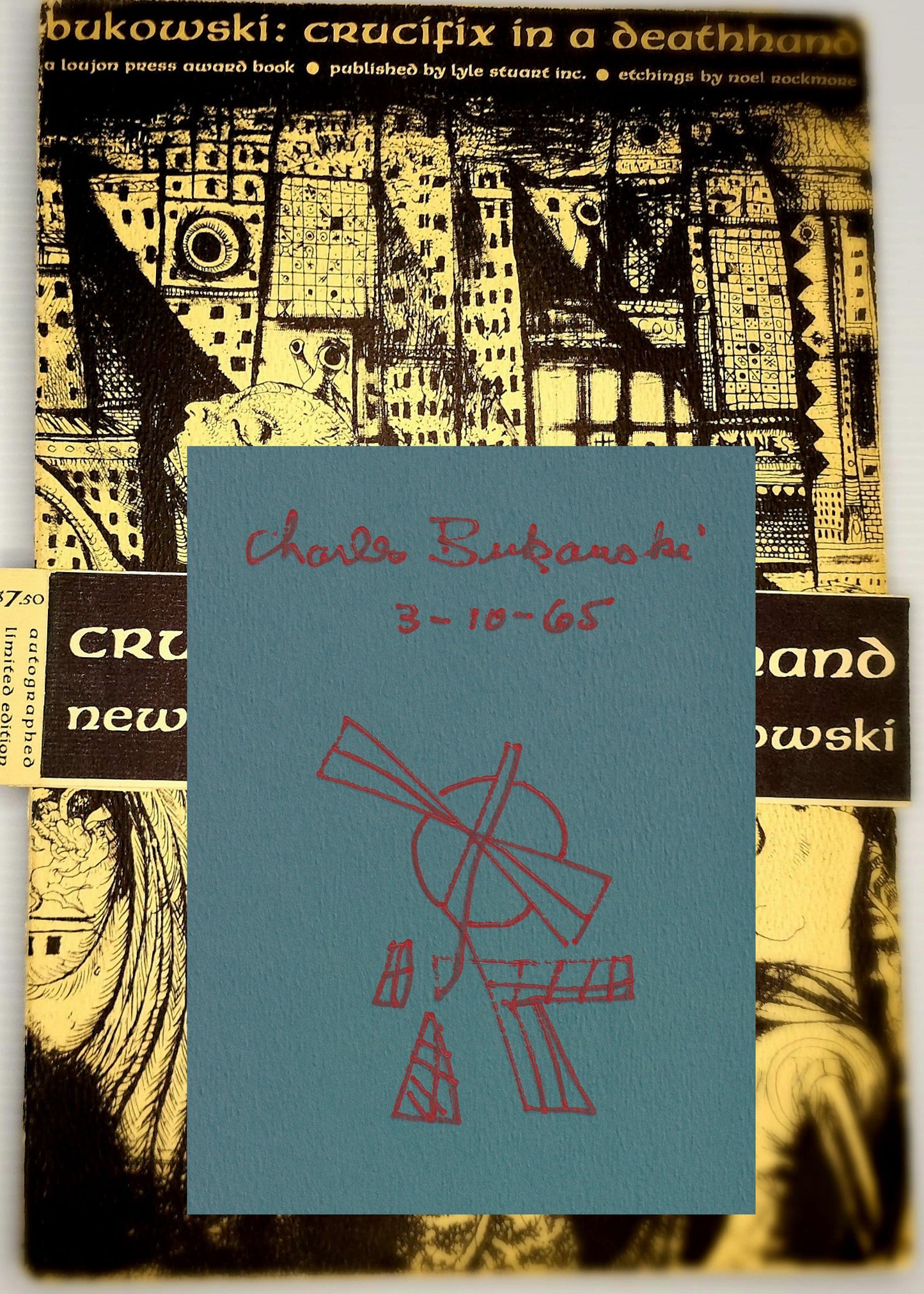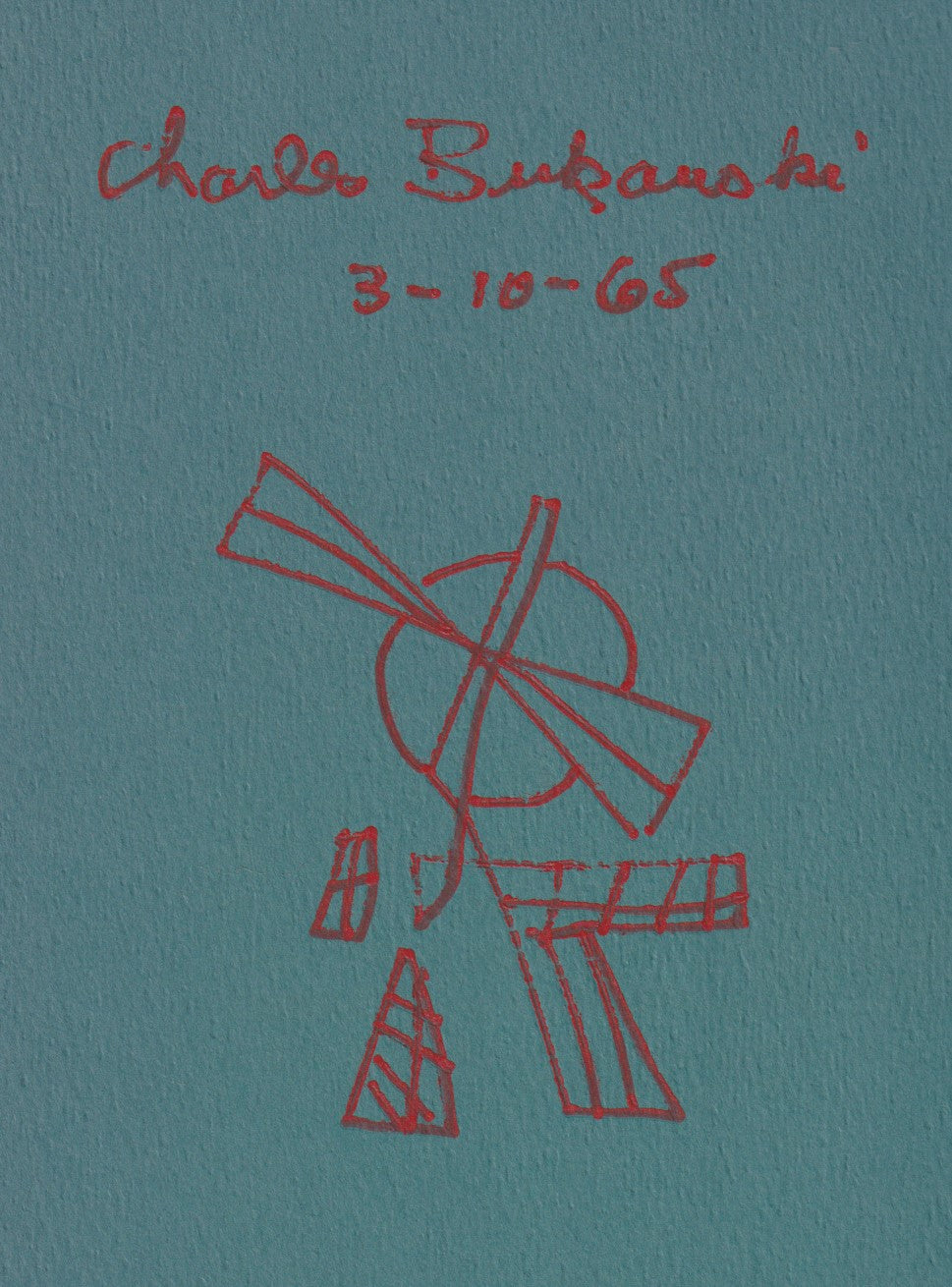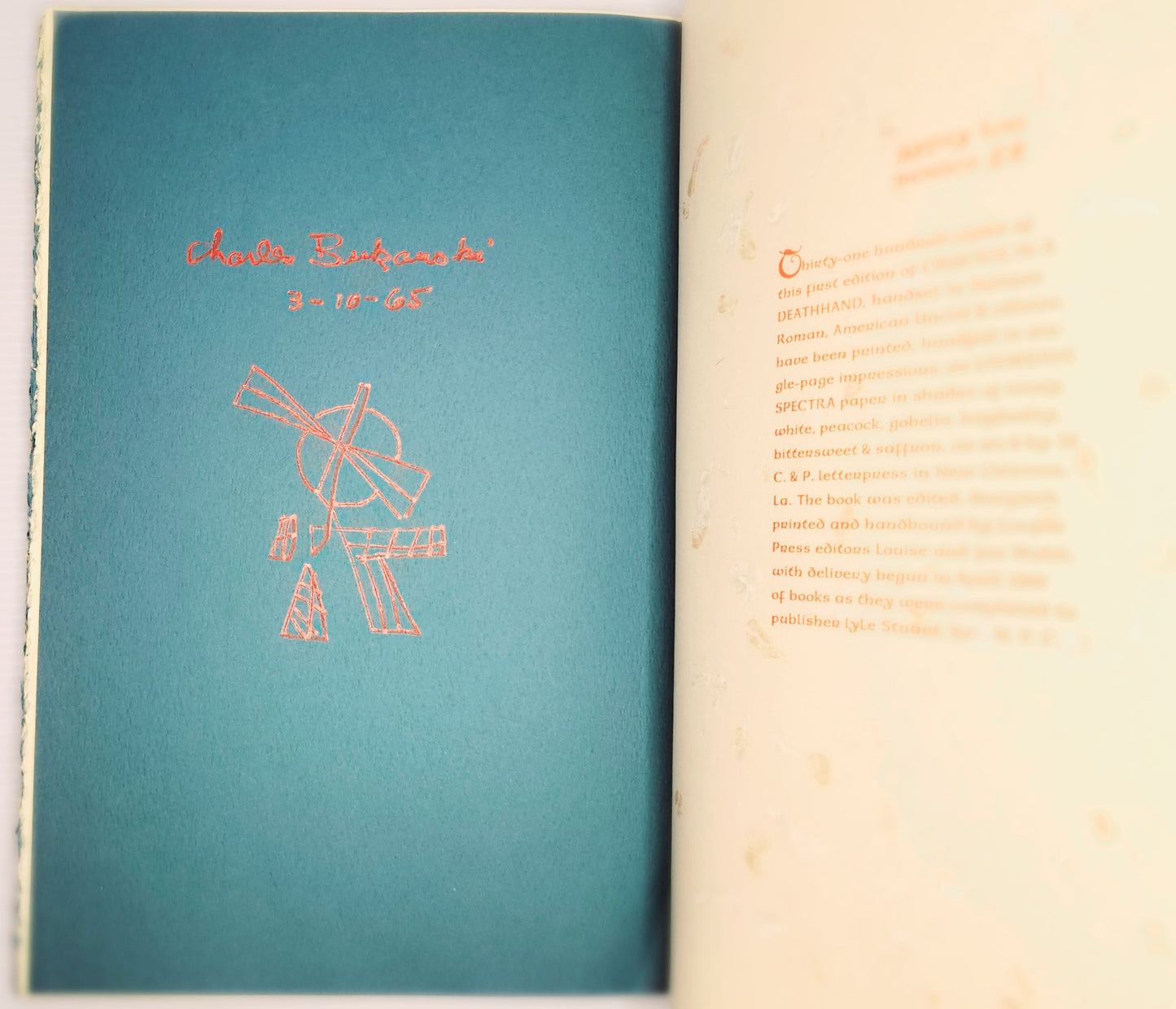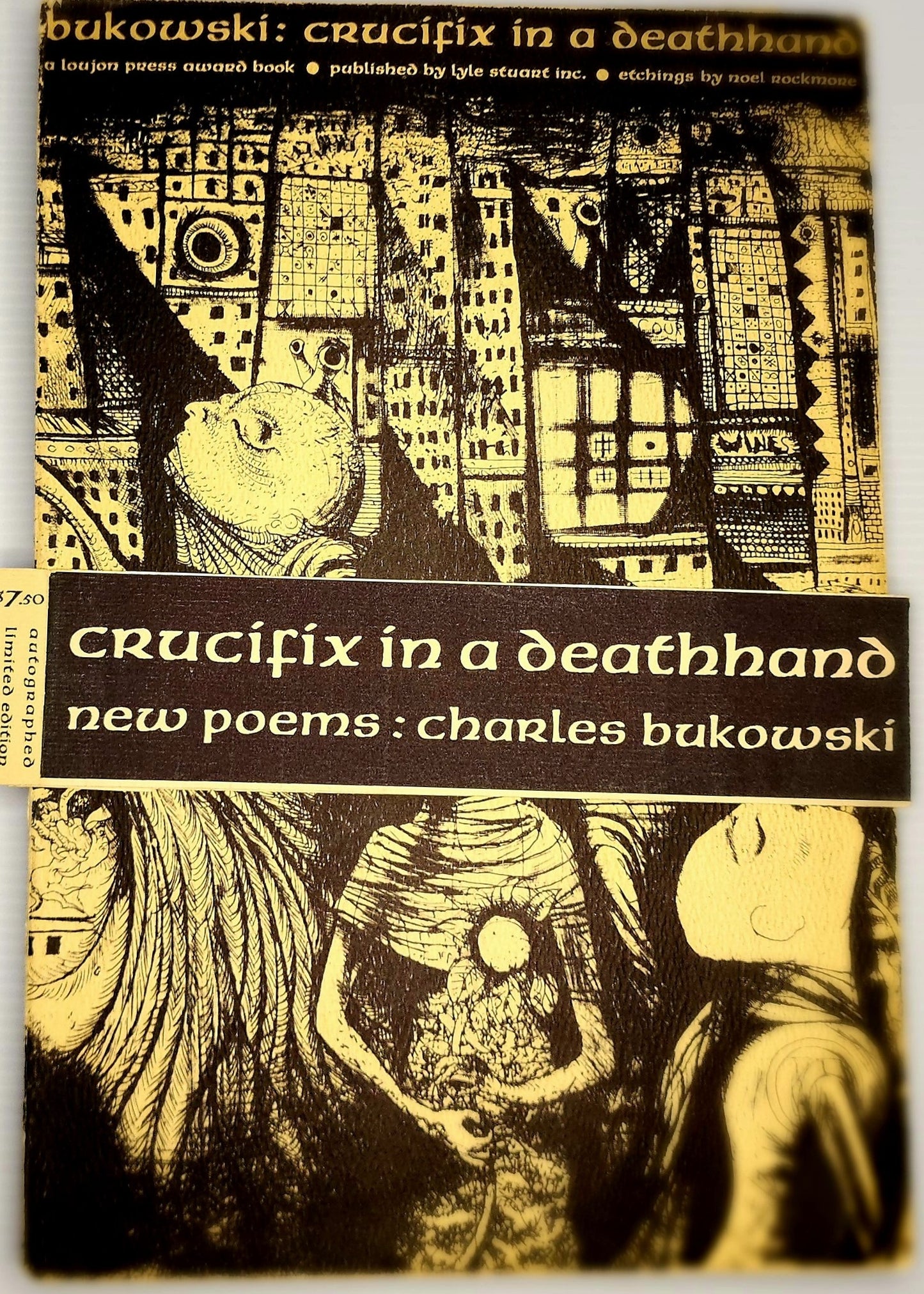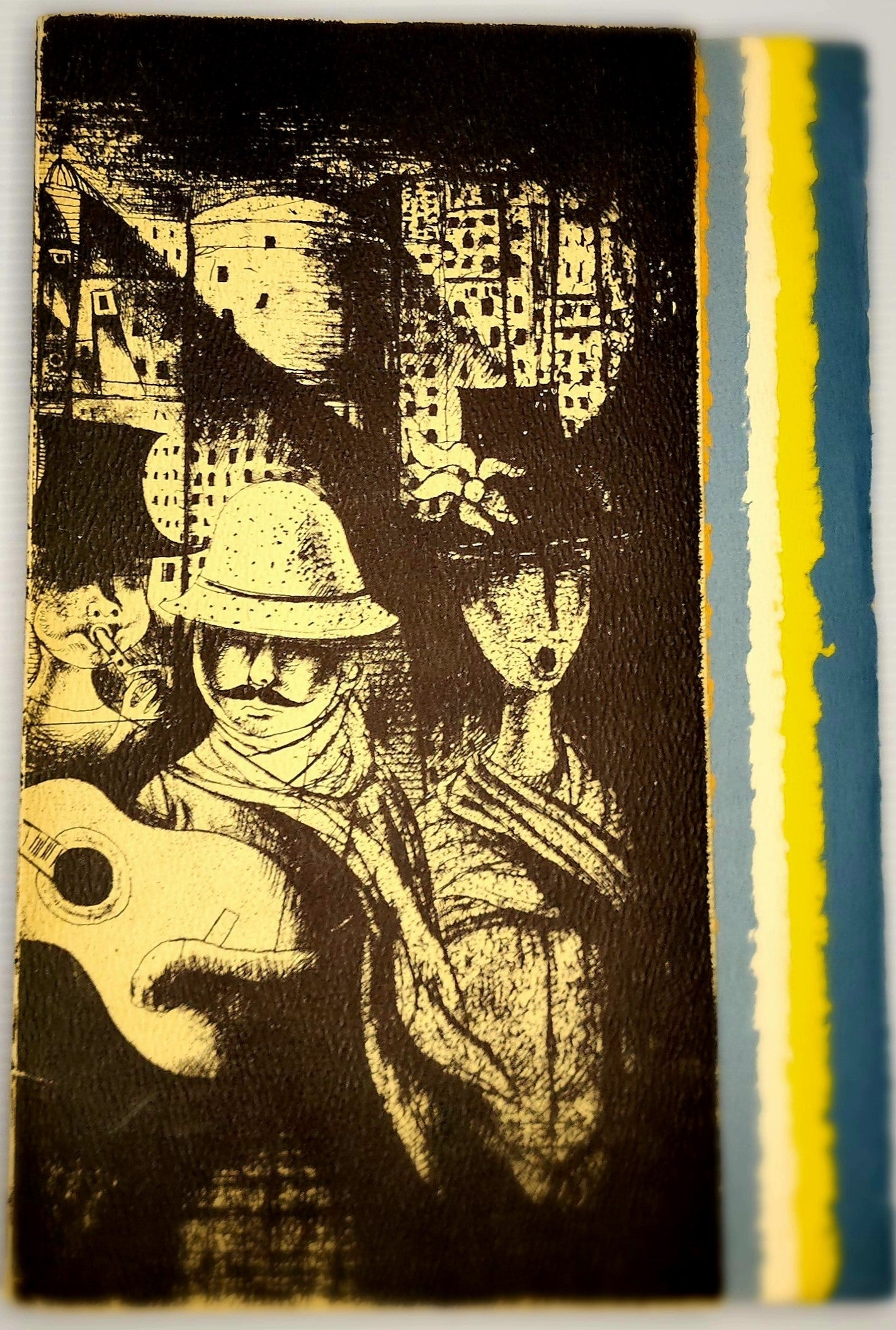The Buk Shop
Crucifix In A Deathhand -- Signed by Charles Bukowski with Large Drawing
Crucifix In A Deathhand -- Signed by Charles Bukowski with Large Drawing
Couldn't load pickup availability
Crucifix In A Deathhand was produced by Jon and Louise Webb, founders of LouJon Press. It was printed on an old sheet-fed press and bound in their tiny apartment in New Orleans in 1965.
This was the second of two Bukowski books they published, the first being It Catches My Heart In Its Hands in 1963.
As with the first book, they went all out, putting all their money and energy into its production. The result is every bit a piece of art as the poetry inside it. It was hand-printed on thick paper stock of various colors, dispersed with tissues and hand-bound. The detail, the printing methods, the craftsmanship, and the pure insanity it took to create the book was as unparalleled then and as it is today.
The etchings in the book were done by Noel Rockmore, a New Orleans artist who was friends with the Webbs. Rockmore was your typical New Orleans character and oddball who spent years capturing the essence of New Orleans in a number of different mediums.
At a reported 3,100 copies, this book had a much larger edition than the first. As a result, you can find copies in good condition on eBay for as low as $300-$350. That’s a great price for this elaborate book when you consider Bukowski signed and dated every copy. A Black Sparrow New Years Greeting, by comparison, will generally go for $225 and up for a small-size book with (usually) a single poem. So if you’re looking for a gift. spend a few bucks more on Crucifix instead.
The copies of Crucifix that I sell all have something special about them, in most cases a full-page drawing. Bukowski spent a week in New Orleans in March 1965 writing last-minute poems for the book and signing and dating the signature pages, which were later inserted into the book. Signing the 3,100 pages was tedious, so once in a while he’d do a drawing to go along with it and perhaps add a quotation, mention New Orleans, or add a time of day to the date – sometimes all three.
Bukowski seemed intrigued with the old architecture of New Orleans and its religious influences, and these drawings sometimes reflect that. It’s not surprising since the Webbs primarily source of income was from Louise “Gypsy Lou” Webb’s selling of paintings and prints to tourists. Her primary subjects were old New Orleans buildings and landmarks, such as Pirate’s Alley.
The abstract drawing in this copy seems to reflect that. Taking up the majority of the signature page, at first glance it appears to be a windmill, and perhaps it is (although New Orleans isn’t known for windmills; perhaps the Moulin Rouge?).
But the overall composition seems to suggest otherwise. Bukowski had been drawing since he was a boy and took illustration and art classes later in life, so he was certainly capable of drawing a windmill. The bottom “blade” seems to in some way be connected to the backward-looking 7 and the two other elements don’t seem connected at all. I’ll try to get a better strain from the cannabis dispensary and stare at it a bit more, but for now let’s just call it an abstract.
This copy is also signed by Charles Bukowski and dated 3-10-65.
This book is in Near Fine condition. There is also a small tear and creases on the top of the back flap where it folds onto the guts of the book. Tiny creases and some toning continue along the very, very top edge of the flap, but don’t impact the front cover or interior pages. There is a miniscule tear on the bottom of the back flap where it folds onto the guts of the book. These are both very common and they are smaller on this copy than most.
Crucifix Case
There is also a tiny tear 3.5’ below the top of the area, but it is barely visible and I couldn’t pick it up on my scanner.
In addition to publishing two Bukowski books, Jon and Louise “Gypsy Lou” Webb published four issues of The Outsider magazine, which became the standard for poetry journals at the time. No other publication attracted nearly the talent that appeared in its pages and the production value of the magazine itself was unrivaled. Bukowski appeared in all four issues, with a large collection of poems in Outsider 1 (1961) and as the named “Outside of the Year” in Outsider 3 (1963), featuring Bukowski on the cover and a large center section.
Crucifix Case
Share
